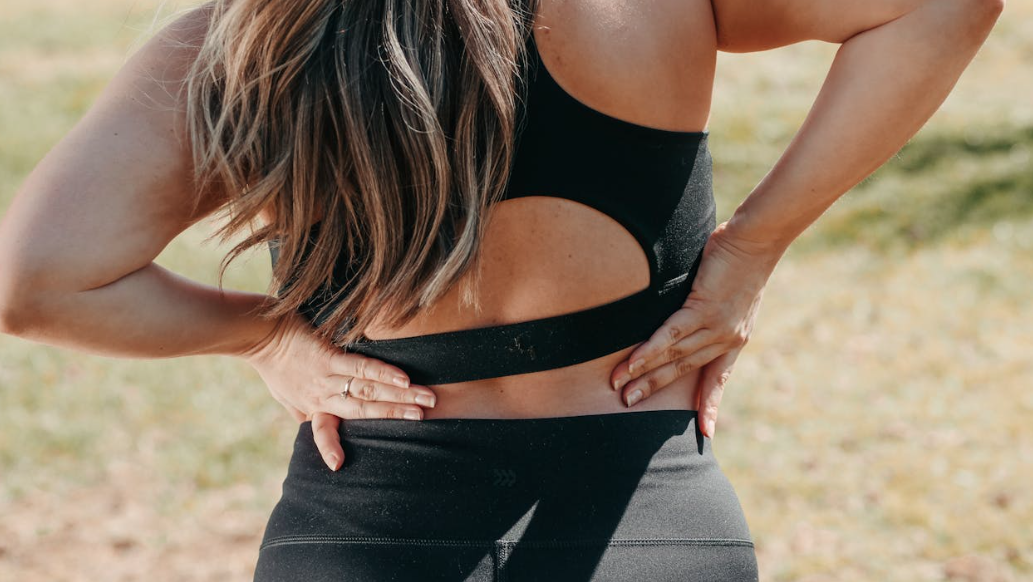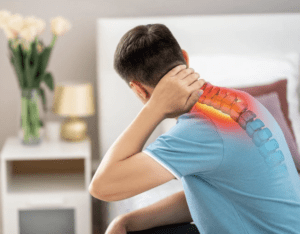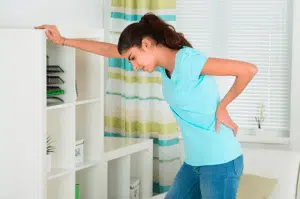

Lower back pain : The best 100 Thing for Lower back pain Relief
Lower back pain is something millions of people deal with daily. Whether it’s caused by poor posture, injury, or lifestyle habits, finding relief can sometimes feel impossible. Luckily, there are countless methods and remedies that can help alleviate the pain. In this article, I’ll cover the best 100 things you can try for lower back pain relief, from simple lifestyle changes to specific therapies. By exploring these options, you can find the best solution that works for you.
1. Improve Your Posture
Good posture reduces strain on your lower back. Make sure to sit and stand tall, with your spine in alignment.
2. Use Ergonomic Chairs
Invest in a chair that supports your lumbar curve, especially if you spend long hours sitting.
3. Get a Standing Desk
Alternate between sitting and standing throughout the day to reduce the strain on your back.
4. Take Frequent Breaks
Stand up and move around every 30 minutes to prevent stiffness.
5. Practice Core-Strengthening Exercises
A strong core supports your lower back. Exercises like planks, bridges, and bird-dogs are excellent choices.
6. Do Gentle Yoga
Yoga helps stretch and strengthen your muscles, relieving tension. Poses like Child’s Pose and Cat-Cow are great for back pain.
7. Stretch Regularly
Focus on stretching your hamstrings, hip flexors, and lower back muscles.
8. Try Foam Rolling
Foam rolling can release tight muscles and improve circulation.
9. Use a Lumbar Support Pillow
Place a lumbar pillow behind your lower back when sitting to help maintain proper posture.
10. Stay Hydrated
Dehydrated muscles can become stiff and painful, so make sure you drink enough water throughout the day.
11. Incorporate Anti-Inflammatory Foods
Foods like leafy greens, berries, and fatty fish can reduce inflammation that causes back pain.
12. Avoid Processed Foods
Sugary, processed foods can trigger inflammation, worsening your pain.
13. Try Acupuncture
This traditional Chinese practice involves inserting needles into specific points to relieve pain.
14. Get a Massage
A therapeutic massage can help loosen tight muscles and ease pain.
15. Use Heat Therapy
A heating pad or warm bath can relax tense muscles in your lower back.
16. Apply Cold Therapy
Ice packs can reduce inflammation and numb sharp pain.
17. Sleep on a Supportive Mattress
A medium-firm mattress can support the natural curve of your spine and reduce back pain.
18. Adjust Your Sleeping Position
Sleep on your side with a pillow between your knees to keep your spine aligned.
19. Use Epsom Salt Baths
Soaking in an Epsom salt bath can reduce muscle tension and inflammation.
20. Try Chiropractic Adjustments
A chiropractor can realign your spine, reducing pressure on your lower back.
21. Wear Supportive Shoes
High heels and unsupportive shoes can cause back pain. Choose shoes that provide good arch support.
22. Maintain a Healthy Weight
Carrying extra weight, especially around your abdomen, can strain your lower back.
23. Practice Deep Breathing
Deep breathing exercises reduce muscle tension and promote relaxation, which can ease pain.
24. Strengthen Your Glutes
Weak glutes can contribute to back pain. Exercises like squats and lunges can help.
25. Try Tai Chi
This gentle martial art improves flexibility, strength, and balance, all of which support your lower back.
26. Get a Physical Therapist’s Help
A physical therapist can create a personalized exercise plan to relieve your pain.
27. Wear a Lumbar Support Belt
A back brace can provide temporary support and relief for acute pain.
28. Use a TENS Unit
Transcutaneous electrical nerve stimulation (TENS) can reduce pain by sending electrical pulses through your skin.
29. Strengthen Your Upper Back
A strong upper back helps support your lower back. Try exercises like rows and lat pull-downs.
30. Practice Mindfulness Meditation
Mindfulness meditation can reduce the perception of pain and help manage chronic discomfort.
31. Foam Roll Your Glutes and Hips
Releasing tight muscles in these areas can alleviate lower back pain.
32. Stretch Your IT Band
A tight iliotibial (IT) band can contribute to lower back pain. Use a foam roller to stretch it out.
33. Reduce Stress
Stress can cause muscle tension, leading to back pain. Practice relaxation techniques like journaling or yoga.
34. Avoid Sitting for Long Periods
Sitting for too long puts pressure on your lower back. Get up and move every hour.
35. Strengthen Your Back with Pilates
Pilates exercises target the core and back muscles, providing long-term relief.
36. Use a Back Stretcher
Back stretchers are designed to decompress your spine and relieve tension.
37. Do Low-Impact Exercises
Swimming, cycling, and walking are excellent for staying active without straining your lower back.
38. Try Essential Oils
Massaging lavender or peppermint oil into your back can provide relief from pain.
39. Take Vitamin D Supplements
Vitamin D deficiency has been linked to musculoskeletal pain, including in the lower back.
40. Boost Your Magnesium Intake
Magnesium helps relax muscles and reduce inflammation.
41. Use Turmeric
Curcumin, the active compound in turmeric, is a powerful anti-inflammatory.
42. Avoid Heavy Lifting
Avoid lifting heavy objects, or use proper lifting techniques to avoid injury.
43. Wear a Proper Backpack
A poorly fitted backpack can strain your lower back. Choose one with padded straps and wear it evenly across both shoulders.
44. Strengthen Your Legs
Strong legs can take pressure off your back. Try squats, leg presses, and lunges.
45. Maintain Good Posture While Driving
Use a lumbar pillow or adjust your seat to support your lower back while driving.
46. Invest in a Body Pillow
Using a body pillow can help maintain spine alignment while you sleep.
47. Use an Inversion Table
Inversion therapy can help decompress your spine and relieve lower back pain.
48. Quit Smoking
Smoking reduces blood flow to the spine, which can lead to pain.
49. Wear Compression Clothing
Compression garments can support your lower back and improve blood circulation.
50. Incorporate Omega-3 Fatty Acids
Omega-3s are known for their anti-inflammatory properties, which can help reduce pain.
51. Stay Active
Even light activities like walking or stretching can keep your muscles limber and reduce pain.
52. Avoid Bed Rest
Long periods of bed rest can actually worsen back pain by weakening your muscles.
53. Strengthen Your Hip Flexors
Weak hip flexors can strain your lower back. Try exercises like leg raises to strengthen them.
54. Use a Tennis Ball to Massage Your Back
A tennis ball can help target knots and tension in your lower back.
55. Try Cupping Therapy
Cupping therapy promotes blood flow and relieves pain by lifting the skin with suction.
56. Stay Consistent with Stretching
Stretching every day keeps your muscles loose and prevents tightness from building up.
57. Improve Your Mattress Support
If your mattress is too soft or too firm, it may be contributing to your back pain. A supportive mattress that aligns with your sleeping style can make a huge difference.
58. Try a Memory Foam Mattress Topper
If you can’t afford a new mattress, a memory foam topper can provide additional support and comfort for your back.
59. Avoid Twisting Movements
Twisting your back, especially while lifting or carrying objects, can aggravate pain. Try to move your entire body instead.
60. Use a Back Brace for Support
For short-term relief, a back brace can provide extra support during activities that strain your back.
61. Strengthen Your Oblique Muscles
Your side muscles play a role in stabilizing your lower back. Strengthen them with exercises like side planks.
62. Take Omega-3 Supplements
Fish oil supplements are packed with omega-3 fatty acids, which help reduce inflammation and pain.
63. Try Spinal Decompression Therapy
This therapy gently stretches the spine to relieve pressure on the discs, promoting healing and pain relief.
64. Avoid Sitting on Soft Surfaces
Sitting on overly soft chairs or couches can lead to poor posture and strain your lower back.
65. Try a Kneeling Chair
A kneeling chair can help promote better posture by encouraging you to sit with a straight back.
66. Use a Massage Gun
A percussion massage gun can target sore muscles and break up tight knots in your lower back.
67. Learn Proper Lifting Techniques
When lifting heavy objects, bend at the knees and keep the object close to your body to avoid straining your back.
68. Incorporate Leg Elevation While Resting
When lying down, elevate your legs with a pillow under your knees to reduce pressure on your spine.
69. Stay Active with Swimming
Swimming is a low-impact exercise that provides full-body support and is especially gentle on your back.
70. Strengthen Your Pelvic Floor
Your pelvic floor muscles play a role in supporting your spine. Kegel exercises can help strengthen them.
71. Do Side Stretches
Stretching the sides of your body, including your obliques and intercostal muscles, can relieve lower back tension.
72. Strengthen Your Lower Abs
Weak lower abdominal muscles can lead to poor posture and back pain. Incorporate exercises like reverse crunches and leg lifts.
73. Work on Your Hip Mobility
Poor hip mobility can contribute to back pain. Regularly stretch and strengthen your hip muscles.
74. Practice Proper Bending Techniques
When bending over, hinge at the hips rather than rounding your back to avoid straining your spine.
75. Use a Swiss Ball for Exercises
Doing core exercises on a Swiss ball can help engage your lower back muscles in a low-impact way.
76. Take Breaks from High Heels
Wearing high heels can shift your body’s alignment and increase strain on your lower back. Opt for comfortable, supportive shoes instead.
77. Wear a Posture Corrector
Posture correctors gently pull your shoulders back, encouraging proper spine alignment and reducing lower back pain.
78. Incorporate Anti-Inflammatory Spices
Spices like ginger and cinnamon can reduce inflammation, which may help alleviate back pain.
79. Try Progressive Muscle Relaxation
This technique involves tensing and relaxing different muscle groups to reduce tension throughout the body, including the lower back.
80. Practice Regular Self-Massage
Use your hands, a massage ball, or a foam roller to gently massage and loosen tight lower back muscles.
81. Improve Your Workspace Ergonomics
Set up your workspace to ensure your computer monitor is at eye level and your chair supports your back.
82. Engage in Daily Walking
Walking is a simple but effective way to stay active and keep your back muscles engaged without putting too much strain on them.
83. Try Dry Needling
Dry needling, similar to acupuncture, can help release muscle tightness and relieve pain.
84. Take Collagen Supplements
Collagen helps maintain the health of your joints and connective tissues, which can support your lower back.
85. Perform Wall Sits
Wall sits strengthen your legs, core, and lower back, which can reduce pain.
86. Use Arnica Gel
Arnica is a natural anti-inflammatory that can be applied topically to relieve muscle pain and swelling.
87. Try Hydrotherapy
Aquatic exercises or simply soaking in warm water can help reduce muscle stiffness and back pain.
88. Avoid Heavy Bags
Carrying heavy backpacks, purses, or messenger bags can cause poor posture and increase lower back pain. Opt for lighter loads or distribute the weight evenly.
89. Strengthen Your Calves
Strong calves can support better posture and take pressure off your lower back. Incorporate calf raises into your routine.
90. Try Active Release Techniques (ART)
ART focuses on breaking down scar tissue and releasing tension in the muscles and tendons.
91. Sleep in the Fetal Position
Sleeping on your side in the fetal position with a pillow between your knees can help align your spine and reduce back pain.
92. Incorporate CBD Oil
CBD oil has been shown to reduce inflammation and provide pain relief for some individuals dealing with chronic back pain.
93. Perform Cat-Cow Stretches
This gentle yoga stretch moves your spine through a range of motion, helping to relieve lower back tension.
94. Strengthen Your Quadriceps
Strong quads help support your knees and lower back. Incorporate exercises like squats and lunges into your routine.
95. Try Feldenkrais Method
This method helps you become more aware of how you move and can teach you better movement patterns that support a healthy back.
96. Consider Prolotherapy
Prolotherapy involves injecting a sugar solution into the ligaments and tendons of the lower back to encourage healing.
97. Avoid Smoking
Smoking decreases oxygen flow to your spine, which can cause degeneration and pain over time.
98. Reduce Alcohol Consumption
Excessive alcohol intake can dehydrate your body, leading to inflammation and increased pain.
99. Try Guided Imagery
This technique uses visualization to help reduce the sensation of pain by focusing on calming, peaceful images.
100. Stay Positive
A positive mindset and mental outlook can have a powerful impact on your ability to manage and overcome pain. Practice gratitude, focus on what you can control, and be kind to yourself during your healing journey.







